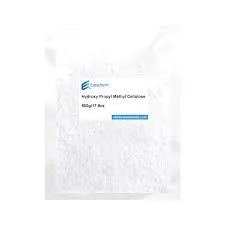
Dec . 13, 2024 22:58 Back to list
mortar bonding additive
The Role of Mortar Bonding Additives in Construction Enhancing Performance and Durability
In the realm of construction, the importance of quality materials cannot be overstated. Among these, mortars play a crucial role in ensuring the structural integrity and aesthetic appeal of various projects. However, the effectiveness of mortars can be significantly improved through the use of bonding additives. Mortar bonding additives, in particular, have become an essential component for achieving optimal adhesion, flexibility, and durability in masonry applications.
Understanding Mortar Bonding Additives
Mortar bonding additives are substances that are mixed with traditional mortar formulations to enhance their properties. These additives can be polymer-based, which improve adhesion, or organic compounds that enhance the workability and reduce shrinkage. Common types of bonding additives include latex emulsions, synthetic resins, and various chemical admixtures designed to modify the mortar’s characteristics.
Benefits of Using Mortar Bonding Additives
1. Improved Adhesion One of the primary functions of bonding additives is to improve the adhesion properties of mortar. When applied to substrates like concrete bricks or tiles, these additives create a stronger bond, ensuring the durability of the installation. This is particularly important in challenging environments, where moisture and temperature fluctuations can weaken traditional mortars.
2. Flexibility In construction, flexibility is vital to accommodate movement due to thermal expansion and contraction, vibrations, or settling of structures. Mortar that has been enhanced with bonding additives exhibits improved flexibility, reducing the risk of cracking and other forms of damage over time.
3. Water Resistance Many bonding additives impart water-resistant characteristics to the mortar. This is beneficial for external applications, such as facades and landscapes, where exposure to rain and humidity can lead to deterioration. Water-resistant mortars help to protect the substrate from moisture ingress, thereby extending the lifespan of any construction.
4. Reduced Shrinkage One of the challenges when using traditional mortar is the potential for shrinkage cracks as the material cures and dries. Bonding additives often contain compounds that significantly reduce this shrinkage, which can lead to a more stable and visually appealing finish.
mortar bonding additive

5. Enhanced Workability The addition of bonding additives can improve the workability of mortar mixtures, making them easier to apply and spread. This can be particularly important for large-scale projects or intricate masonry designs, where precise application is crucial.
6. Adapting to Different Substrates The versatility of bonding additives allows them to be used with various substrates, making them ideal for renovation projects or mixed-material applications. This adaptability means that construction professionals can achieve strong bonds across different surfaces without needing to change their foundational materials extensively.
Common Applications
Mortar bonding additives are commonly used in various applications, including
- Tile and Stone Installation For both residential and commercial projects, bonding additives ensure that tiles and stones remain firmly attached to their backing, even in moisture-laden environments like bathrooms and kitchens.
- Repairs and Renovations In restoration work, bonding additives help to create a seamless transition between new materials and aged substrates, ensuring structural integrity and aesthetic continuity.
- Architectural Elements Mortars used for decorative masonry, such as facades or intricate stone carvings, benefit greatly from the strength and flexibility provided by bonding additives.
Conclusion
In summary, the incorporation of mortar bonding additives provides substantial benefits to construction practices. By enhancing adhesion, flexibility, water resistance, and workability, these additives ensure that mortars perform at their best throughout the life of the structure. As the construction industry continues to evolve, the role of innovative materials such as bonding additives will undoubtedly become increasingly significant, contributing to safer, more durable, and aesthetically pleasing buildings. Investing in quality mortar with bonding additives is not just a choice; it is a commitment to craftsmanship and longevity in construction.
-
Versatile Hpmc Uses in Different Industries
NewsJun.19,2025
-
Redispersible Powder's Role in Enhancing Durability of Construction Products
NewsJun.19,2025
-
Hydroxyethyl Cellulose Applications Driving Green Industrial Processes
NewsJun.19,2025
-
Exploring Different Redispersible Polymer Powder
NewsJun.19,2025
-
Choosing the Right Mortar Bonding Agent
NewsJun.19,2025
-
Applications and Significance of China Hpmc in Modern Industries
NewsJun.19,2025







